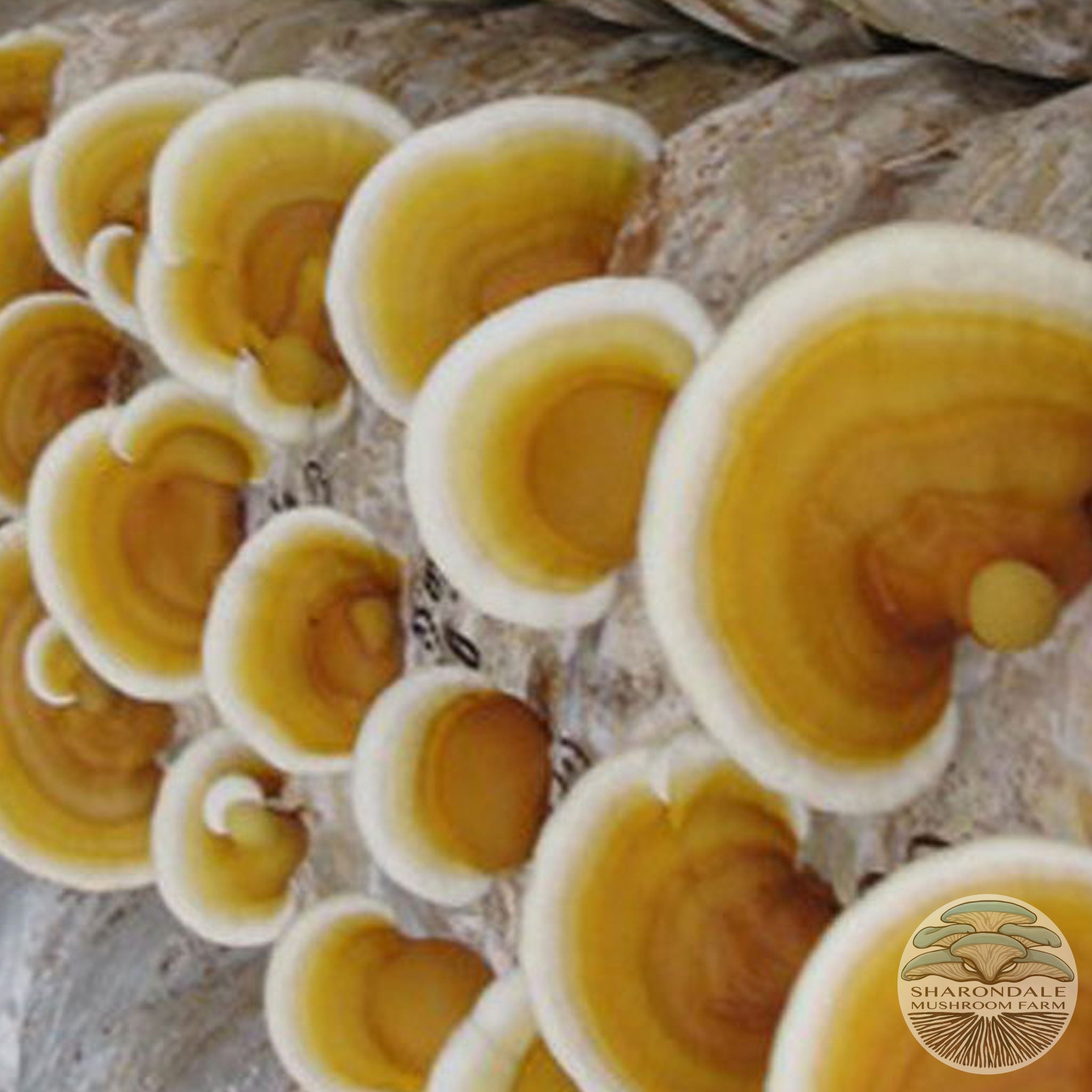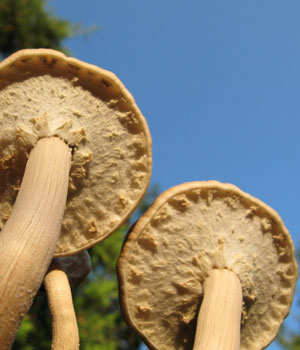Wow! We have been super busy this summer. In June, a tornado knocked down about a half acre of old forest right behind the house. What an opportunity! We have been cutting mushroom logs, chipping branches, and cutting large logs for milling lumber. We will use the lumber to build a workshop pavilion in the clearing and we’ll plant more forest garden to capture this new found sunlight.
Six days before the storm, we completed a hoop house in the edge of the woods for growing temperate and tropical mushroom species. A couple of the hoops were slightly bent by falling branches, and it was no longer in the shade of a couple of 24″ diameter tulip poplar trees that snapped off in the wind. So, we installed shade cloth and are growing three different species of tropical oyster mushrooms, including yellow, pink, and a tan colored strain.
Reishi also thrive in the warm humid environment of the hoop house. We are growing a locally collected variety and a commercial variety of Ganoderma lucidum, and a strain of the Golden Reishi (G. curtisii) from Tradd Cotter’s collection. Reishi in Japanese or Ling Chi in Chinese, is the ancient mushroom of immortality that has powerful medicinal value. Our friend Dawn Story at New Moon Naturals, blends our reishi with medicinal herbs for five excellent tea blends.
In addition to these fine wood rotters we are growing Almond Portobello (Agaricus subrufescens) in bag culture.
This has been an interesting learning experience. In the past we have had great success growing this mushroom in compost beds in the woods. Our experiments have so far yielded nice large mushrooms, the main harvest from bags will happen over the next several weeks. Most people like this mushroom, which is related to the white button mushroom, but smells and tastes like almond extract. It has gained much attention as an important medicinal mushroom.
And last but not least, is the delicious Velvet Pioppino (Agrocybe cylindracea, also known as A. aegerita).
I brought spores of this mushroom home from Thailand where it is extensively cultivated. So far, this is still in the experimental stage here but it seems to like the hardwood and wheat bran substrate we use for some other species. Hopefully this mushroom will become a standard offering to our local mycophiles.



